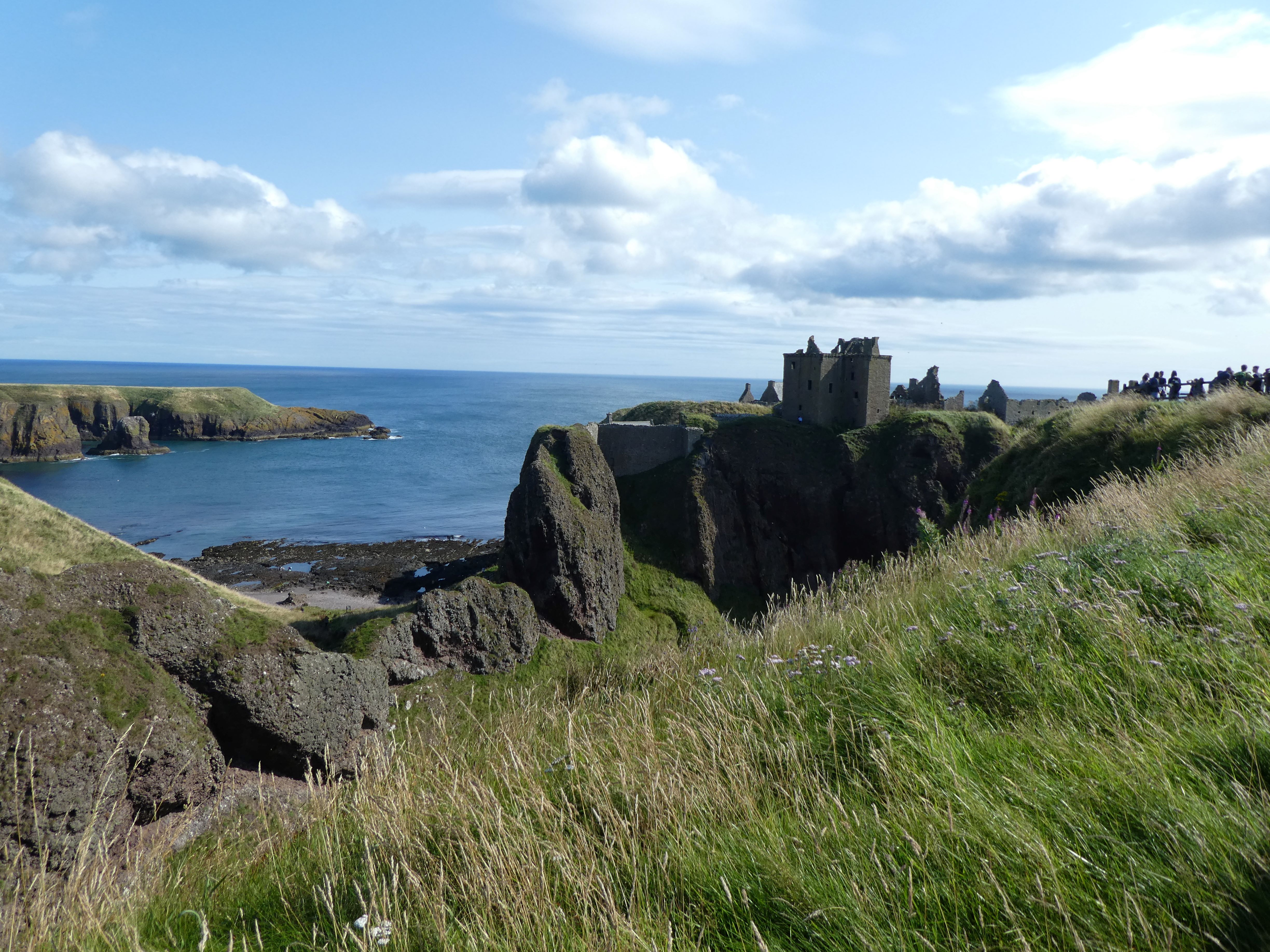
What a beautiful day and a very pleasant walk over from Stonehaven

What a beautiful day and a very pleasant walk over from Stonehaven



This place is simply stunning and site of a number of pictish (is that the right term) forts here and along the coast


Regal entrance!



From the west.... the crumbling castle overlaying remnants of Pictish cliff fort.

The impregnable rock from Old Hall Bay to the south.

Looking north. Must admit this would have been a fine site for a cliff fort, obviously meeting the primary criterion. Also rather popular with nesting seagulls... the noise! A feathery cachophony of sound assaulting the eardrums.

Plans have been announced for a new visitor centre at Dunnottar Castle, near Stonehaven.
bbc.co.uk/news/uk-scotland-north-east-orkney-shetland-58804765
Oh Dunnottar... the ‘slope fort’ (from the Gaelic ‘Dun’ [fort] and Fothair [slope]). At first sight the gaunt castle ruins, seeming almost to sprout from the living rock upon which they stand (between Castle Haven and Old Hall Bay, just to the south of Stonehaven), promise an interlude from the intensity of hunting the many RSC’s in the area. A few hours by the sea to regain some perspective, perhaps? But then the sheer importance of this site, not only to Scottish history, but to the prehistory of this magical land becomes apparent to the interested traveller.
First, the history – the castle was established in the 14th Century, the walls no doubt incorporating elements of the preceding Pictish fort which once stood on the site, and must have been pretty well impregnable before the advent of heavy artillery. Wallace invested it, ditto Cromwellian forces between September 1651 and May 1652. It was during the latter siege that a Mrs Grainger, wife of Kinneff’s minister, managed to blag herself an exit and spirit away the Scottish crown hidden in her dress. One assumes she was a somewhat hefty lass... as Private Fraser out of Dad’s Army would say, ‘wi’ nice, firm thighs...’. But I digress.
For me, however, it is the natural defences of Dunnottar, the great crag jutting out into the sea, which make a visit here a must to all those with a passion for the past, a past which, if understood, can perhaps guide the modern Scotland towards a more balanced and confident future. Much has been written about Scots gaelic culture... not all of it to the nation’s benefit, in my opinion (the ludicrous Braveheart, anyone?)... coinciding with devolution and the roaring success of the Tiger economy across the Irish Sea before the recent crash. Comparatively little has been written about the people who once inhabited Dunnottar in prehistory, a people who have arguably – to use a modern term – been retrospectively ‘photoshopped’ out of Scotland’s story. The Picts.
So who were the Picts, these people who apparently scared the living daylights out of many a Roman legionnary, yet carved exquisite stones? Theres’s apparently not an awful lot to go on. However legend has it Dunnottar was chosen by the Picts due to it’s association with ‘The Green Lady’, no doubt some reference to a Mother Goddess?. Climb upon its rock, with the seagulls a’wheeling around your head in a cacophony of noise and I’ve no doubt you’ll understand what they meant. Well, at least a little.....
Like Dunluce upon the Antrim coast, the castle here is almost an irrelevance compared with the rawness of nature at this site. If you’re after a starting point to gauge the spirit of the Picts I’d argue here is as good a place to start as any....
An official website with details of opening times, plus history of this marvellous site.


































































































































